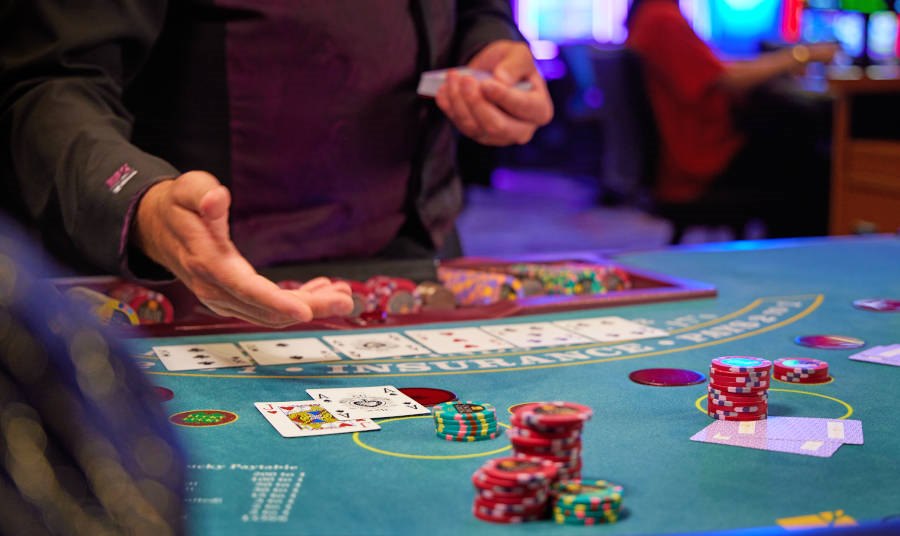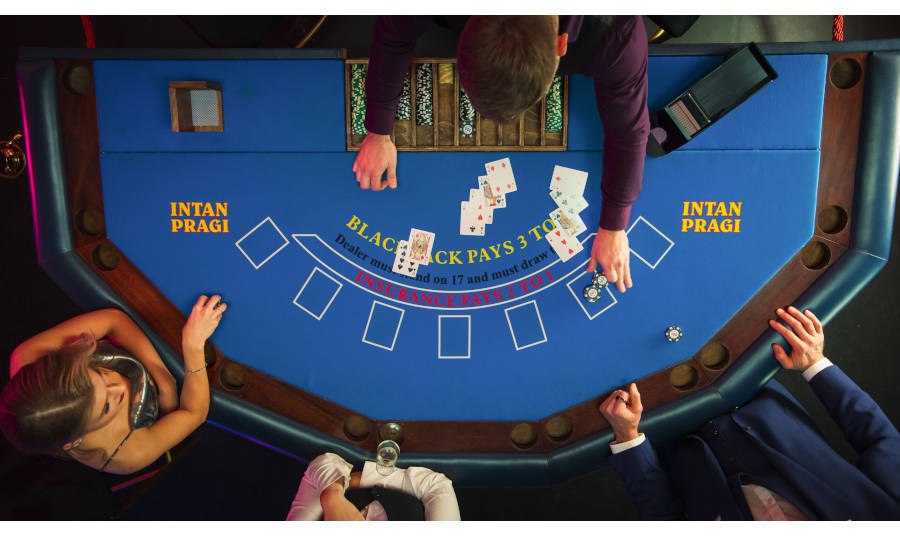
Spanish 21 vs. Blackjack: Key Differences Explained
Blackjack is one of the most iconic table games - and one of the most popular in any casino. However, experienced players looking for a new challenge and novelty in their gameplay can find what they love about blackjack in Spanish 21, which offers a fresh twist on the classic game. When considering Spanish 21 vs. blackjack, both games are rooted in the same core goal - beating the dealer without busting - Spanish 21 introduces unique rules, bonus payouts, and strategic variations that distinguish it from traditional blackjack. Understanding how Spanish 21 works can help you decide which version suits your play style best.Understanding Spanish 21
Though Spanish 21 has a very different name from blackjack, it is the same game with several stylistic variations. Here's a closer look at this fun and unique game:
What is Spanish 21?
Spanish 21 is a popular variation of blackjack that removes all the 10-spot cards from the deck, leaving 48 cards per deck instead of the standard 52. Despite this change, the game offers numerous player-friendly rules and bonus payouts that can make it an exciting and potentially rewarding alternative to classic blackjack.
Basic Rules of Spanish 21
At its core, Spanish 21 follows the same objective as standard blackjack: get as close to 21 as possible without going over and beat the dealer's hand. However, Spanish 21 introduces several player advantages: - Players who get 21 always win, even if the dealer also has 21.
- Late surrender allows players to forfeit half their bet after seeing the dealer's hole card.
- Players can double down at any time, even after splitting cards.
- Re-splitting aces is often allowed.
- Player-friendly bonuses are awarded for certain hands, such as 5-card 21s, 6-7-8, or 7-7-7 combinations.
Payout Structure in Spanish 21
Spanish 21 offers a variety of enhanced payouts that go beyond the standard 3:2 for Blackjack. Some typical bonus payouts include: - 3:2 for a natural Blackjack
- 3:2 for a 5-card 21
- 2:1 for a 6-card 21
- 3:1 for a 7-card 21
- 3:2 or 2:1 for specifically suited 6-7-8 or 7-7-7 combinations (with higher payouts if the dealer shows a 7)

Common Misconceptions About Spanish 21
One of the most common misconceptions is that removing the four 10s from each deck makes the game worse for players. While it does affect card distribution and probabilities, the player-friendly rules and bonus payouts are designed to compensate for this change, often resulting in a lower house edge than standard blackjack if played with optimal strategy. Another misconception is that Spanish 21 is just a marketing gimmick, when in fact, its unique structure creates a distinct strategic experience that many skilled players prefer. Understanding Blackjack
Blackjack is one of the most widely played and easily recognizable casino games worldwide. Known for its simple rules, quick gameplay, and blend of luck and strategy, blackjack is a favorite among beginners and seasoned players. When analyzing Spanish 21 vs. blackjack, it's essential to understand these key differences.
What is Blackjack?
Blackjack, also known as 21, is a card game where players compete against the dealer to get a hand total as close to 21 without going over. Each player plays individually against the dealer, and the goal is to beat the dealer's hand without busting (getting a hand total greater than 21).
Basic Rules of Blackjack
One of the reasons that blackjack is so popular is that the rules are simple and easy to learn. Each player is dealt two cards; the dealer receives one face-up card and one face-down (hole) card. Number cards are worth their face value, face cards are worth 10, and aces are worth 1 or 11 (players choose the most advantageous value with the other cards in the hand).Players can choose to hit (take another card), stand (keep their current hand), double down (double their bet and receive one card), or split (if dealt a pair).
After all players finish their turns, the dealer reveals the hole card and must hit until reaching at least 17. If the dealer busts and the player has not, the player wins. If the dealer stands and the player's total is higher, the player also wins.
Payout Structure in Blackjack
Standard payouts in blackjack are straightforward: - Blackjack (Ace + 10-value card) pays 3:2
- Standard win pays 1:1
- Insurance bet pays 2:1 (if taken when the dealer shows an Ace and has blackjack)
Common Misconceptions About Blackjack
Many players mistakenly believe that blackjack is all about luck. In truth, it is one of the few casino games where proper strategy can significantly reduce the house edge. Luck can always help your game, but good strategy will take you much further. Another myth is that players at the table can affect your outcome. However, while poor play by others may be frustrating, your results are based solely on the order of the cards and your own decisions.
Key Differences Between Spanish 21 vs. Blackjack
While these popular games share the same foundational goal, several key differences set Spanish 21 apart from traditional Blackjack. These include unique rule variations and strategic elements that make Spanish 21 vs. Blackjack an interesting comparison for players seeking a fresh twist on the classic game.
Deck Composition
Blackjack uses standard 52-card decks, including all four 10s. In contrast, Spanish 21 uses 48-card decks, with all the 10s removed (but with the face cards remaining). The deck composition of Spanish 21 alters the odds and probabilities, especially for players who count cards or rely on 10s for strategic plays.
Role of the Dealer
One similarity between blackjack and Spanish 21 is that the dealer typically hits on 16 in both games and stands on 17. However, there is a big difference in how wins are calculated. In Spanish 21, even if the dealer makes 21, the player's 21 always wins, which gives players a significant advantage compared with traditional blackjack. 
Player Options and Variations
Spanish 21 allows for more flexible player actions, including doubling after splitting, late surrender, and re-splitting aces. In contrast, blackjack follows stricter rules. Doubling down is usually limited to the first two cards, and surrender may not be offered. Spanish 21 also includes bonus payouts for specific hands, which don't exist in standard blackjack. Choosing the Right Game for You
Deciding between Spanish 21 vs. blackjack depends on your playing style, comfort with game variations, and appetite for strategy. Standard blackjack is likely your best choice if you enjoy classic gameplay with straightforward rules. However, if you prefer more options, frequent bonus payouts, and additional flexibility, Spanish 21 may offer a more dynamic and potentially rewarding experience.Spanish 21 tends to favor players comfortable adapting to complex rules and enjoying taking advantage of multiple betting and hand-management options. Meanwhile, blackjack appeals to those who prefer a more structured and time-tested game. Whichever you choose, understanding the rules and optimal strategy is key to maximizing your chances.
Frequently Asked Questions
Learning a new game always comes with a bit of a learning curve. Here are the answers to some frequently asked questions to help you get acclimated a bit more quickly:
Is Spanish 21 More Difficult than Regular Blackjack?
Spanish 21 isn't necessarily harder, but it does come with more rules and player decisions, making it slightly more complex. Players must consider unique bonus payouts, a different deck composition, and expanded move options like late surrender and re-splitting aces. This might feel overwhelming for beginners, but experienced players often find these features add a fun and strategic layer to the game.
How Does the Payout Structure Affect Winnings?
In traditional blackjack, payouts are simpler - 3:2 for a natural blackjack and 1:1 for most other wins. Spanish 21, on the other hand, introduces bonus payouts for hands like five-card 21s or suited 6-7-8 combinations, which can lead to significantly higher earnings. These enhanced payouts help offset the disadvantage of playing without 10s in the deck and, when used strategically, can even lead to a lower house edge than blackjack. Play Spanish 21 and Blackjack at Cache Creek
Whether you're a traditional gamer who enjoys the classic thrill of blackjack or an adventurous player eager to try something new with Spanish 21, you'll find both games ready for action at Cache Creek Casino Resort. Spanish 21 vs. blackjack is a captivating comparison, and Cache Creek is the perfect destination for players of all experience levels with professional dealers, comfortable tables, and an inviting atmosphere. Take your seat and test your skills at two of the most exciting card games in the casino.When you're ready to try something new, check out the many other table games and slot machines. There are thrilling games for every taste and betting limits for every budget. You can join the Cache Club, our player rewards club, to earn more perks while winning. Try out delicious cuisine or take in a live show for a complete entertainment experience.
